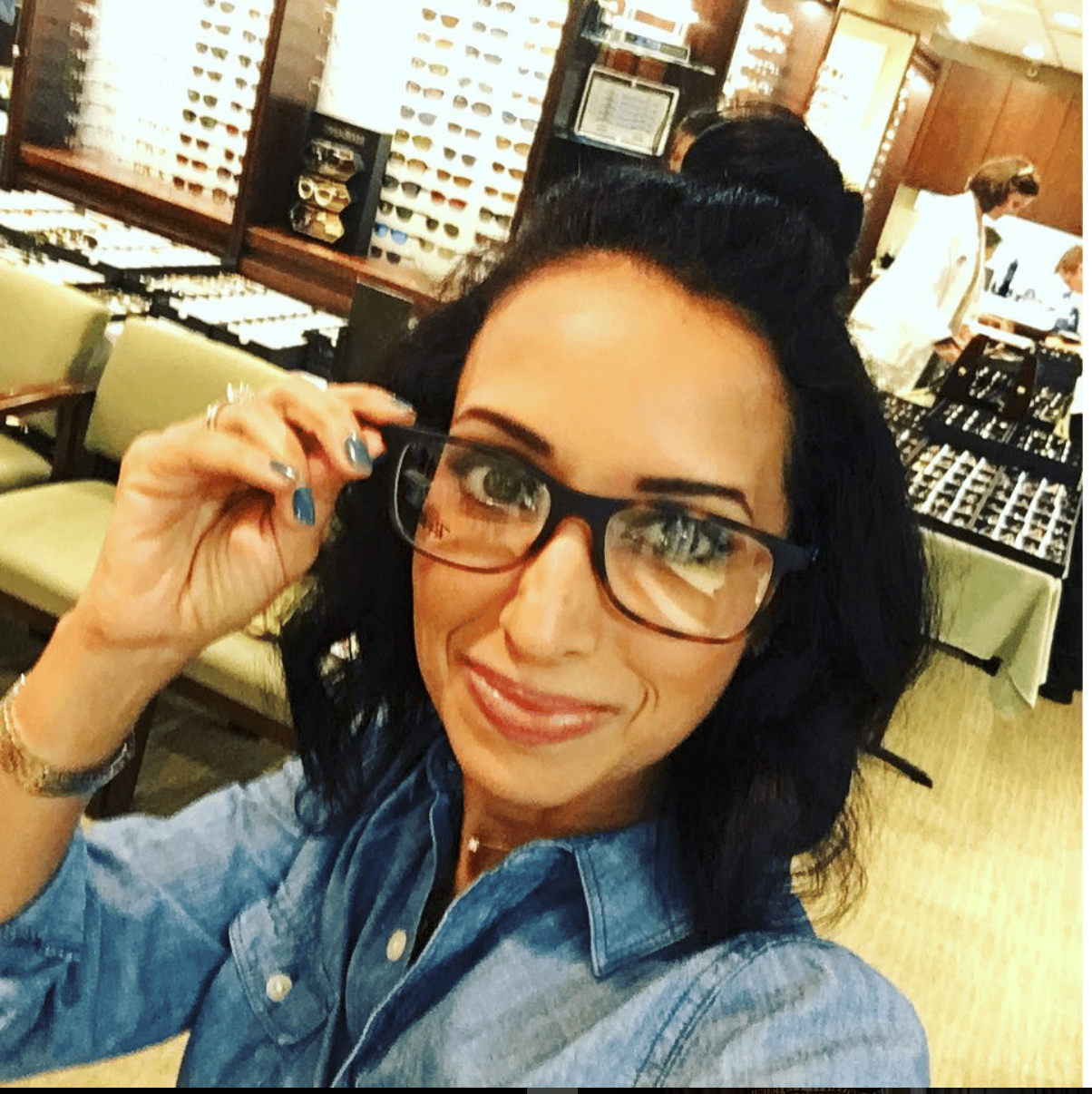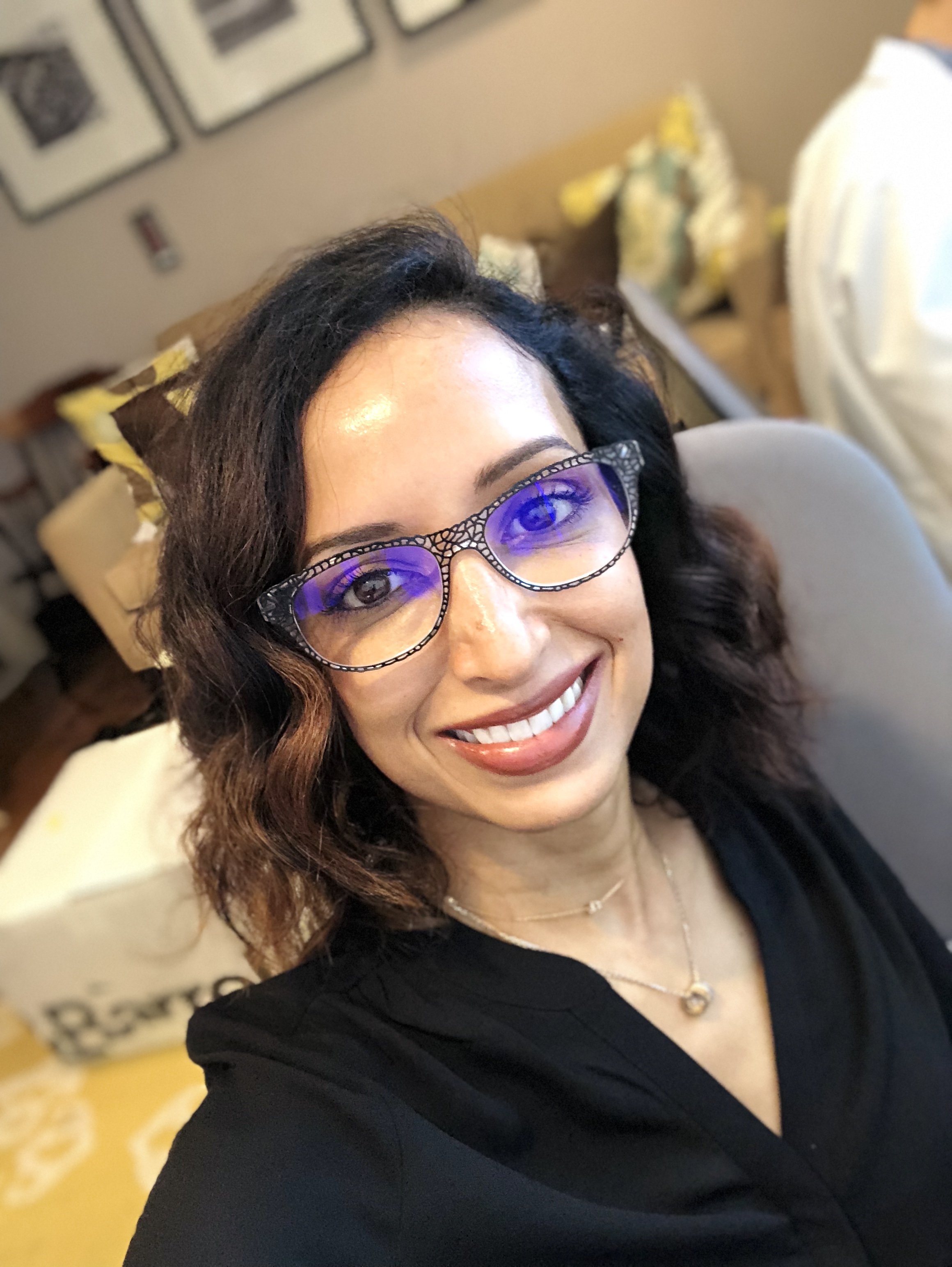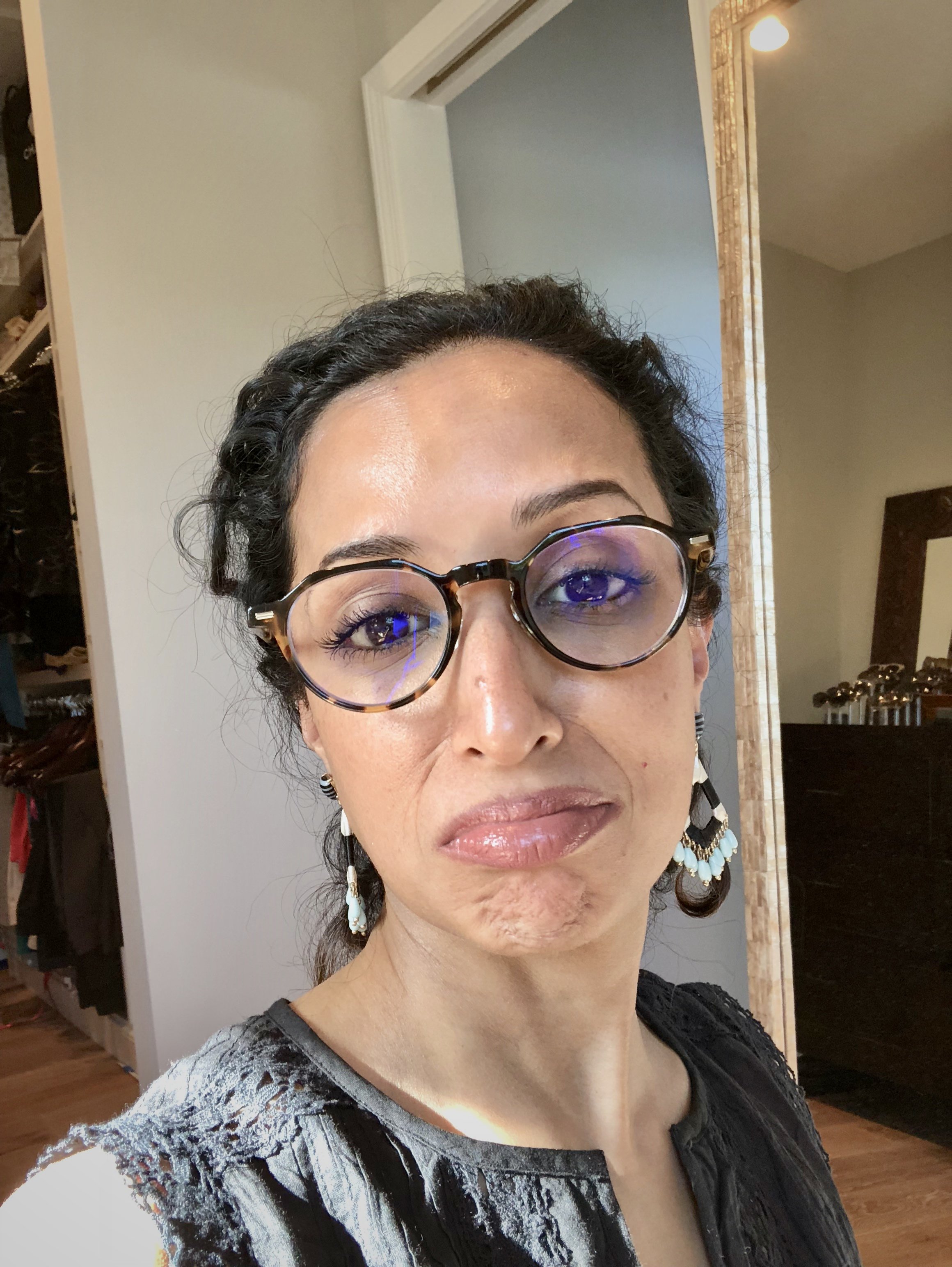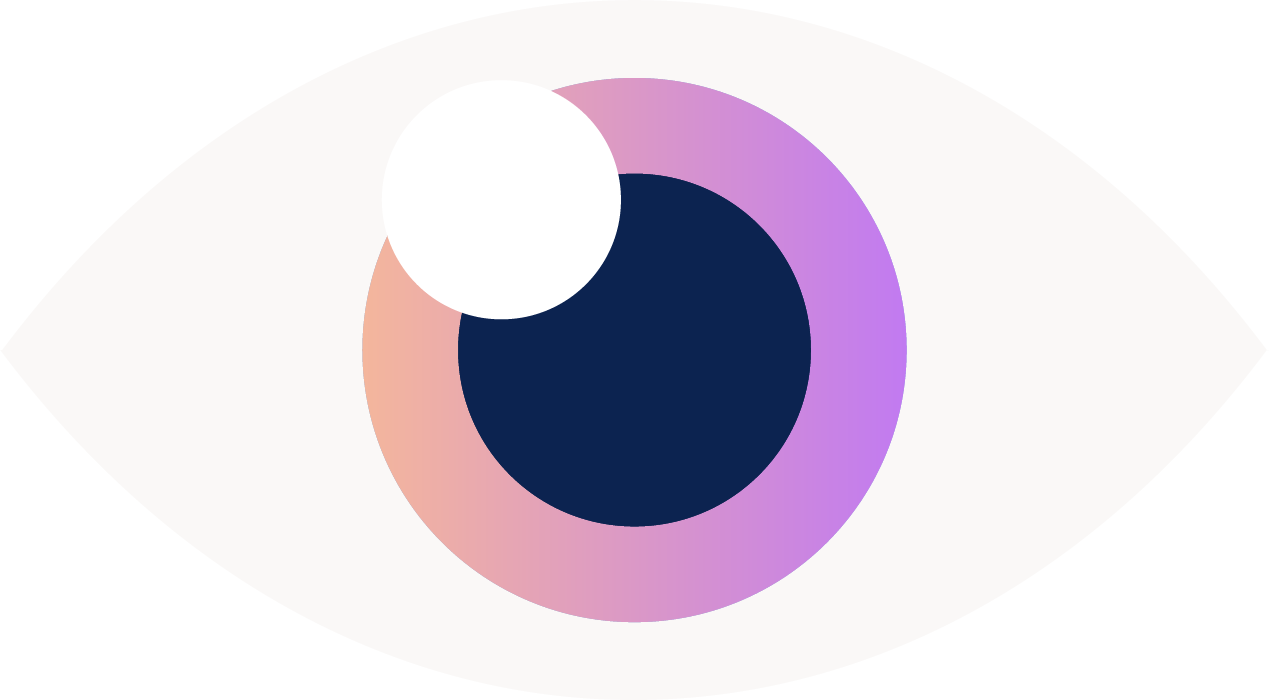Adapting to New Glasses
I have recently started relying upon my glasses a little more. My prescription is pretty small and I have only noticed in the past year or so, after I hit 40. I usually choose the same type of rectangular frame and my prescription hasn't changed in the past 2 years. Just look at my collection - other than the difference in color, basically the same shape.

I usually wear my glasses for about an hour or two a week. Not too often in the past, but, lately, more than that. My usual go-to pair was this pair of Ray Ban above or the Fendi below. Same rectangular shape.


So, our clinic is upgrading our lenses to the new Zeiss lens and I chose a new pair of glasses to go with the new lens. I got the pair back and it was SO clear. Like viewing in HDTV clear when I had been watching an old cathode ray tube TV. I loved them.

Then I decided I was tired of getting the same shape frame over and over, so I decided to try something totally different - round. And, when those glasses came back a week later, I just didn't like my vision in them.

Until I experienced this, I think I never truly understood what a patient meant when they said their vision was "too clear". But, that's exactly what I felt. I couldn't quite put my finger on it, but it just wasn't the same as the other pair I had just gotten. Same prescription, same lab making the lens. Only thing that was different was the shape of my glasses. So, I asked my optician her thoughts and the first question she asked me
-
Are you switching back and forth between your two different pairs?
Well, yeah, of course. Turns, out that's the wrong thing to do. Being a newbie to wearing glasses, I had not given myself time to adapt to the new frame, so I asked our optician to give some advice about adapting to new lenses.
Hi, I'm the Optician for Honolulu Eye Clinic.
So you’ve finished the eye exam, and for the first time in your life, the doctor says you need to wear prescription eye glasses. You’ve never worn glasses before so you talk about lens options with the local optician, select a gorgeous new frame and finalize the order details. The optician calls you two weeks later when the glasses are ready. You try them on and your eyes widen in awe as you look around and suddenly see everything in sharp detail and crystal clarity. But after a few seconds of looking around, you start to feel a little funny. Objects almost look too sharp and after looking around and around through the lenses, you start to feel a little dizzy and feel a headache coming on. You look up at the optician in alarm and say, I cant wear these!!!
STOP. Take a deep breath.
This is a NORMAL experience, referred to as the adaptation period. Nearly all first-time glasses wearers experience initial dizziness and a sort of “off-balance” feeling. This is the time when the brain needs a chance to get adjusted to what the eyes are now seeing in crystal clarity. This is very common, and sometimes it takes a few minutes, a few days, or even a few weeks, before you can fully enjoy your new glasses. So don't be discouraged! Take breaks when you experience dizziness, but do your best to put them back on and wear them as much as you can.
HEC Tips:
WEAR YOUR GLASSES. This seems like a no-brainer, but wearing the glasses every day for one or two weeks will give you the best chance at getting used to the new prescription. If dizziness or the “off-balance” feeling is the issue, practice wearing them in a safe environment, such as when you get home and are doing chores or watching TV. Be extra careful if you are wearing them while driving and walking down flights of stairs.
KEEP YOUR HEAD MOVEMENTS NATURAL. Often times, first time wearers stop moving their head as they normally would and move their eyes only. Let your eyes and head work together, turning your head towards something you want to look at rather than just moving your eyes. This will usually help to reduce headaches and dizziness.
CLEAN YOUR LENSES. Smudges on the lenses are distracting to anyone wearing glasses, but especially to a first-time wearer who is adjusting to a new prescription. Keep your lenses clean with a small drop of liquid soap and water, and wipe the lenses dry with your Honolulu Eye Clinic microfiber cleaning cloth.
Even patients who have been wearing glasses for years can go through an adaptation period. Changes in prescription, slight changes in the inner curves of the lens, or even changing into a different frame style can create the need for an adaptation period. If this happens to you, TRY NOT TO WEAR YOUR OLD GLASSES. Resist the urge to switch to an older pair during the adaptation period. We understand that you may feel more comfortable wearing the old prescription, but wearing the old glasses will not give you a chance to adjust to the new pair. Even switching back and forth from old to new can prolong the adaptation period.
Wearing your glasses full-time for one or two weeks is typically the best way to adapt to your new prescription, however, if after that time you still experience headaches and dizziness, call your eye doctor to schedule an appointment. It may be possible that a correction to your lenses or the prescription may need to be made.

